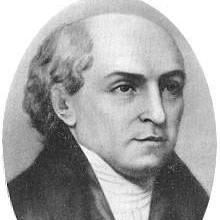Adventist convictions
Like all Churches stemming from the Revival movement, to become a member of the Adventist Church, one has to first have a personal relationship with Christ and decide to join the community, on a free and voluntary basis. It is necessary to be baptized by immersion and to support the community by paying a tenth of one’s revenue (the tithe).
The Adventist Church insists on the authority of the Scriptures but differs from other protestant Churches in its observance of the Sabbath. The Adventists consider that the new Alliance has not abolished God’s law. Salvation, which has been given to us through Christ, does not prevent us from still respecting the Sabbath as a useful and necessary rule of life, but not however as a means of salvation. This is why believers gather for worship on Saturdays, the day of the Sabbath, the seventh day in the week and refrain from any activity on that day out of respect for the teachings of the Old Testament. In addition, the Adventists still expect Christ to come in glory one day but the precise date of this event is no longer predicted. In the meantime they consider that they have a mission to accomplish : to gather together God’s people, ready to welcome Christ as their king and judge.
History
At the end of the XVIIIth century a significant Revival movement came into being in Würtemberg ; it spread throughout Europe and even to North America. In New England it led to the setting up of many religious communities and missions. Some of them gathered together, united in their expectation of the end of the world and the return of Christ. William Miller (1782-1849) studied the prophesies of Daniel and predicted that the world would come to an end in 1843 and then 1844. When this prophesy failed to come true, the “adventists,” rejected by their former Churches, gathered together and followed certain religious leaders, one of whom was James White. His wife, Ellen White (1827-1915), was well-known for her prophesies which encouraged the study of the Bible, the democratic organization of the movement in order to safeguard it from fanaticism and advocated a healthy lifestyle : no alcohol or smoking and health safety campaigns. This first period was one of conflict with the protestant Churches which they had left. In spite of various crises, the movement never ceased to expand, spreading throughout the States, Europe and other continents.
The establishment of the Adventist Church in France
The Adventist Church spread to Switzerland when an American missionary, John Andrews, came to Bale in 1874 and started up the review : Sign of the Times, it was circulated in France at the end of the XIXth century and the first Adventist Churches came into being in the Tarn, the Drôme and Alsace.
The organization of the Church
The Adventist Church is an international organization. The general Conference is the governing body which brings together all the Churches ; they are organized according to the Presbyterian tradition, on five levels : the local Church, the federation, the union, the division (which groups together 13 major regions in the world) and the general Conference. The international headquarters are in Silver Spring, Maryland in the United States and the general Conference meets at an international level every five years, when they elect a world president for a five year mandate.
The Adventist Church is an observer at the Ecumenical Council of Churches (E.C.C.) and a member of the International Bible Alliance ; it contributes actively to the translating, printing and circulating of the Bible.
In France, the Adventist Churches form religious associations (according to the law of 1905) grouped into two Federations ; these form a Union, whose president is elected for a period of five years. The Union of the Seventh Day Adventist Churches (Union des Eglises adventistes du septième jour) joined the Federation of French Protestants (Fédération Protestante de France) (F.P.F.) in 2005.
Commitments
Since its foundation, the Adventist Church has been committed to helping various humanitarian causes through its international organization called ADRA (the Adventist Agency for Aid and Development), which has 140 branches throughout the world. In France, the Adventist Church plays an important social role.
Ellen White’s influence lives on today in the stress laid by the Adventist Church on questions of health : instruction is given through its publications in France these are edited under the name Life and Health (Vie et Santé). It also has research laboratories and health centres (there are 600 medical establishments in the world). The league Life and Health (Vie et Santé) has gained its reputation through seminars such a “the 5-day-plan” to help people stop smoking. Other seminars are held which deal with nutrition and stress, amongst other subjects.
In the domain of education, the Adventists have set up an educational network which consists of 90 universities throughout the world and 1250 secondary schools ; these are mostly in the developing countries. In the French overseas departments and territories, the Adventists own about fifteen schools, most of which have a contract with the State.
In France itself, on the Adventist campus in Salève, Collanges-sous-Salève (74) there is a primary school, a lycée and a theology faculty where all the French-speaking pastors are trained.
Some statistics
The Adventist Church today exists in 204 countries throughout the world and has 13 million baptized members.
In France there are 11,000 baptised members, in Martinique 13,000, in Guadeloupe 10,000 ; in Haiti 350,000 and in French speaking Africa : 900,000.
For further information consult : http : //www.adventist.org








